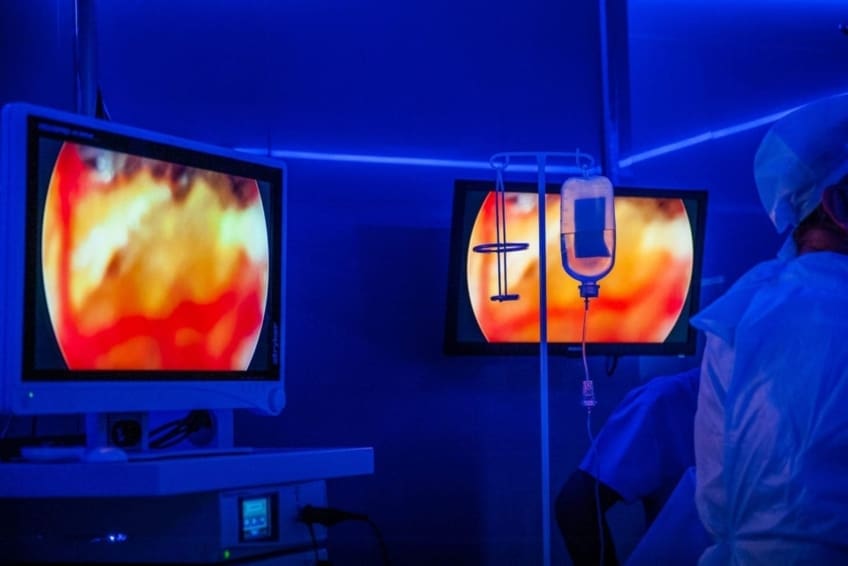
What is laparoscopic gallbladder removal?
If you have gallbladder pain and other symptoms, you may need surgery to remove your gallbladder.
The gallbladder is a small, pear-shaped organ just under your liver. It stores bile, the digestive fluid the liver makes to digest fat. Sometimes the gallbladder gets inflamed. This happens when the flow of bile is blocked. This can be caused by gallstones (hard deposits that form inside your gallbladder), injury, or other conditions. When this happens, you may experience pain and other symptoms. Your doctor may want to remove your gallbladder. Fortunately, we don’t need our gallbladders to live. And removal usually doesn’t cause complications.
It is important to note that not all people who have gallstones require surgery to remove their gallbladder. Your doctor will help decide which course of action is best for you and your symptoms.
Doctors call the surgery to remove the gallbladder a cholecystectomy. Before the procedure, your care team will give you anesthesia to put you to sleep so you won’t feel any pain during the surgery.
During traditional surgery, the surgeon removes the gallbladder through a 5- to 8-inch-long incision (cut) in your abdomen. This procedure is known as an open cholecystectomy.
How the procedure works
Most surgeons remove the gallbladder using a procedure called laparoscopic cholecystectomy. During this surgery, the surgeon makes 3 to 4 small incisions in your abdomen and inserts special instruments through the cuts. The surgeon then uses these tools to view the gallbladder and remove it.
One of the instruments used is called a laparoscope. This is a small, thin tube with a camera and light on the tip. The camera is used to see the inside your body. The camera shows your gallbladder on a TV screen. This allows the doctor to see the gallbladder while they remove it. Your doctor will insert tools in the other cuts to complete the surgery. Your gallbladder is then taken out through one of the incisions.
After the gallbladder is removed, your doctor will clamp off all the bile ducts. They will close the incisions with stitches, staples, or glue. The procedure takes 1 to 2 hours. Most people go home the same day or the day after the surgery.
Benefits compared to open surgery
Laparoscopic gallbladder removal has many advantages. Unlike traditional surgery, laparoscopic surgery can be done without cutting the muscles of your abdomen. This may allow you to:
- Have less pain after surgery
- Have a shorter hospital stay
- Have a shorter recovery time
- Return to work more quickly
Have much less noticeable scars than with a traditional cholecystectomy
Who shouldn’t have laparoscopic gallbladder removal?
Laparoscopic surgery isn’t the best choice for everyone. An open surgery may be better if you:
- Had surgery around your gallbladder before
- Tend to bleed a lot
- Have any problem that would make it hard for your doctor to see your gallbladder
Your doctor will decide which type of surgery is appropriate for you.
Potential complications of laparoscopic gallbladder removal
As with any surgery, there could be complications. These are rare but could include:
- Bleeding
- Infection
- Injury (to the tube that carries bile from your gallbladder to your stomach)
- Bile leakage
In addition, the intestines, liver, or major blood vessels may be injured when the instruments are inserted into the abdomen. Remember, these complications are rare. But if you’re experiencing unusual pain after gallbladder surgery, call your doctor right away.
It is also common to have some diarrhea for a while after surgery.
Questions to ask your doctor
- Do I need to have my gallbladder removed?
- Which type of surgery is best for me?
- What are the risks of laparoscopic surgery?
- How long will I be in the hospital?
- How long will it take me to recover?
- What are signs of complications?
Resources
National Institutes of Health, MedlinePlus: Gallbladder removal—laparoscopic
![]()
Copyright © American Academy of Family Physicians
This information provides a general overview and may not apply to everyone. Talk to your family doctor to find out if this information applies to you and to get more information on this subject.











